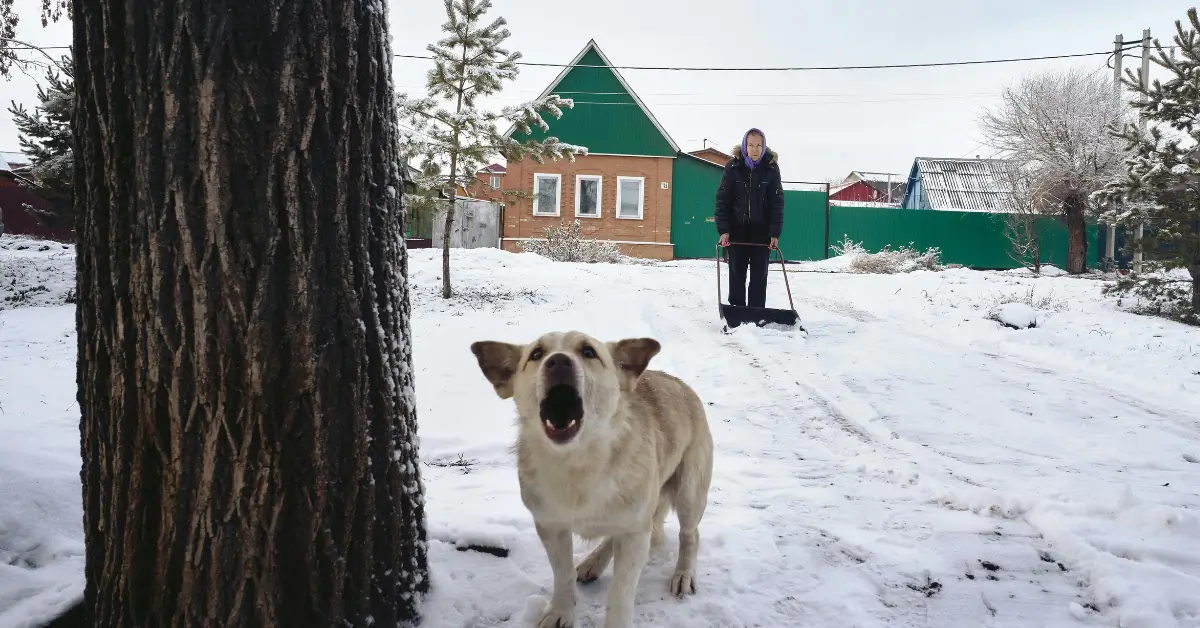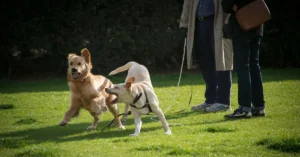Are you wondering how to stop a dog from demanding barking? This common problem can be a big challenge for dog owners. When a dog learns that barking gets what it wants—whether that’s food, attention, or play—it can start to use its voice as a tool. This behavior might seem cute at first, but it can quickly become excessive and disruptive. Luckily, there are effective ways to teach your dog quieter ways to communicate its needs.
Demand barking can turn a peaceful home into a noisy environment. Understanding why and when your dog barks is the first step to addressing this issue. This article will guide you through the process, from recognizing the triggers to teaching your dog new behaviors.
Here are the four key steps to reduce or eliminate the demand for barking. Each section provides practical advice that has been tested and approved by dog trainers and owners alike. By the end of this guide, you’ll have the tools and knowledge needed to tackle demand barking head-on. Let’s start this journey to better communication and a more peaceful home together.
Decoding Demand Barking in Dogs
Demand barking occurs when your dog learns that barking gets them what they want, such as treats, affection, or a fun toy. It’s important to recognize what triggers your dog to bark in this manner, like when they hear an alarm, as understanding these triggers is the first step in addressing this behavior. Your response can either reinforce or help extinguish their future barking habits. If your dog barks to go outside or when they wants the chew toy on the couch, try delaying your reaction or offering a different interaction. This strategy can gradually help reduce the barking habit, although it may take up to six months of consistent effort and patient guidance.
Recognizing the Triggers and Indicators
Typically, a dog resorts to barking in situations where they’ve successfully gotten your attention or rewards through barking in the past. Common triggers include wanting food while you eat, craving play while you’re busy, or seeking attention when you’re home. For instance, your dog might also bark louder if they want the toy or react to the sound of a vacuum by barking, even if they’ve previously been quiet. Recognizing these triggers can help you anticipate and mitigate barking episodes before they start.
Mastering Communication to Curb Barking
Cultivating Leadership and Respect
Being a pet leader means setting boundaries. If your dog barks to get something, resist the urge to give in. Consistency is crucial here. You can establish leadership by controlling resources, like treats and toys, and deciding when your dog can access them, reinforcing your role as the pack leader.
Implementing Basic Commands as the First Step
Train your dog with basic commands like ‘sit,’ ‘stay,’ and ‘come.’ Teaching your dog to obey these can help shift their focus from barking to following your cues. Use treats to quiet compliance and gradually extend the periods of silence before giving a reward. This practice not only reinforces the behavior you want but also helps your dog learn impulse control, which is essential in reducing demand barking.
Balancing Reinforcement with Corrections
Employing Positive Reward Techniques
Positive reinforcement is key to teaching your dog what behaviors you prefer. This involves rewarding your dog for quiet behavior with treats, praise, or playtime when they exhibit silence instead of barking. This method encourages your dog to remain quiet and strengthens your bond through positive interactions. The treats should be immediate and valuable enough to make an impression, ensuring they associate quietness with positive outcomes.
Using Appropriate Correction Tactics to Reduce Barking
While positive reinforcement is preferred, appropriate corrective measures are sometimes necessary to guide your dog. If your dog starts barking, instead of yelling or scolding, ignore them or leave the room. This teaches them that barking won’t gain your attention or achieve their desired outcome. You can return and reward their silence once they calm down and stop barking. This dog training is based on the concept of extinction, where ignoring the barking behavior gradually reduces its frequency.
Laying the Groundwork to Prevent Future Barking
Creating a calm environment and engaging lifestyle for your dog is crucial in preventing future episodes of demand barking. By proactively managing their surroundings and giving your dog quality time, you can significantly reduce the triggers that prompt this type of barking. Let’s explore how enhancing their exercise regimen and modifying their environment can contribute to a quieter home.
Managing the Environment and Enhancing Exercise Regimens
Reducing visual and auditory triggers that provoke your dog can be very effective. Using blinds or curtains to block their view of the outdoors or playing soft music to mask outside noises can help prevent demand barker at external stimuli. Additionally, ensure your dog gets plenty of physical and mental exercise. Engaging them with interactive toys, puzzle feeders, and regular play sessions can significantly reduce their stress and boredom, thereby minimizing barking incidents.
Enhancing Exercise Regimens
Exercise is good for your dog’s physical health and is crucial in behavioral management. A well-exercised dog is typically calmer and less likely to engage in demand barking. Incorporate both physical and mental stimulation into your daily routine to keep your dog satisfied and less likely to bark for attention. It’s really important to match the type of activity to your dog’s energy level and needs, ensuring they’re tired out and content, which will reduce their need to bark for stimulation.
Wrapping Up: Strategies How to Stop Demand Barking
As we wrap up our exploration of how to manage demand barking, it’s clear that understanding, patience, and consistency are your best tools. We’ve walked through recognizing the triggers that lead to this behavior, communicating effectively with your dog, and using both positive reinforcement and appropriate corrections to encourage quieter behavior.
Successfully reducing demand barking involves a mix of proactive training and environmental management. By setting clear boundaries and teaching alternative behaviors, you can significantly decrease the frequency and intensity of your dog’s barking. Remember, the key to success is consistency—dogs learn best through repeated, consistent actions.
With patience and persistent application of the strategies outlined in this guide, you can enjoy a quieter home and a better relationship with your dog. It’s not just about stopping the noise; it’s about understanding and meeting your dog’s needs in healthier ways. Let me know how these tips work for you, and if your dog won’t respond at first, it’s hard, but keep trying.
Frequently Asked Questions
Q1: What triggers demand barking in dogs?
A1: Demand barking typically occurs when a dog learns that this behavior gets them what they want, like attention or treats. Common triggers include when they demand bark for food while you eat or when they wish to go outside and play. Recognizing these triggers is a critical first step in preventing this type of barking. By understanding what prompts your dog to bark, you can better manage their environment and cues, reducing instances of this behavior.
Q2: What should I do when my dog barks at other dogs?
A2: When your dog barks at another dog, try to distract them with a high-value treat or give it something. If that doesn’t work, move them to another room or use a ‘quiet’ cue if you’ve trained them with one. This can help curb their barking and reinforce quieter behavior in the presence of other dogs.
Q3: How can I teach my dog to stop barking when I’m not home?
A3: Teaching a dog to stop barking when alone can be challenging. Using a crate for periods when you go to work can help, as it creates a safe, calm space. Also, leaving a Kong filled with treats or a puzzle toy can keep them occupied and reduce barking due to boredom or anxiety. This strategy gives your dog something else to focus on instead of barking, reinforcing quiet behavior even when you’re not there.
Q4: Will my dog’s demand barking get worse if I ignore it?
A4: Ignoring demand barking can lead to what’s known as an extinction burst, where the barking initially gets worse. However, if you consistently ignore the barking and only reward quiet behavior, your dog will learn that barking isn’t effective and the behavior should decrease over time. This extinction process requires patience and persistence, as your dog will test the new boundaries but gradually learn to adapt.
Q5: How long does it usually take to change a barking behavior?
A5: The time it takes to change a barking behavior can vary. Typically, with consistent training and reinforcement, you might see changes within a few weeks to 4 months up to 6 months. However, the exact time can depend on the individual dog and how consistent you are with the training. Persistence and repetition are crucial in helping your dog learn new behaviors and reduce unwanted barking.




